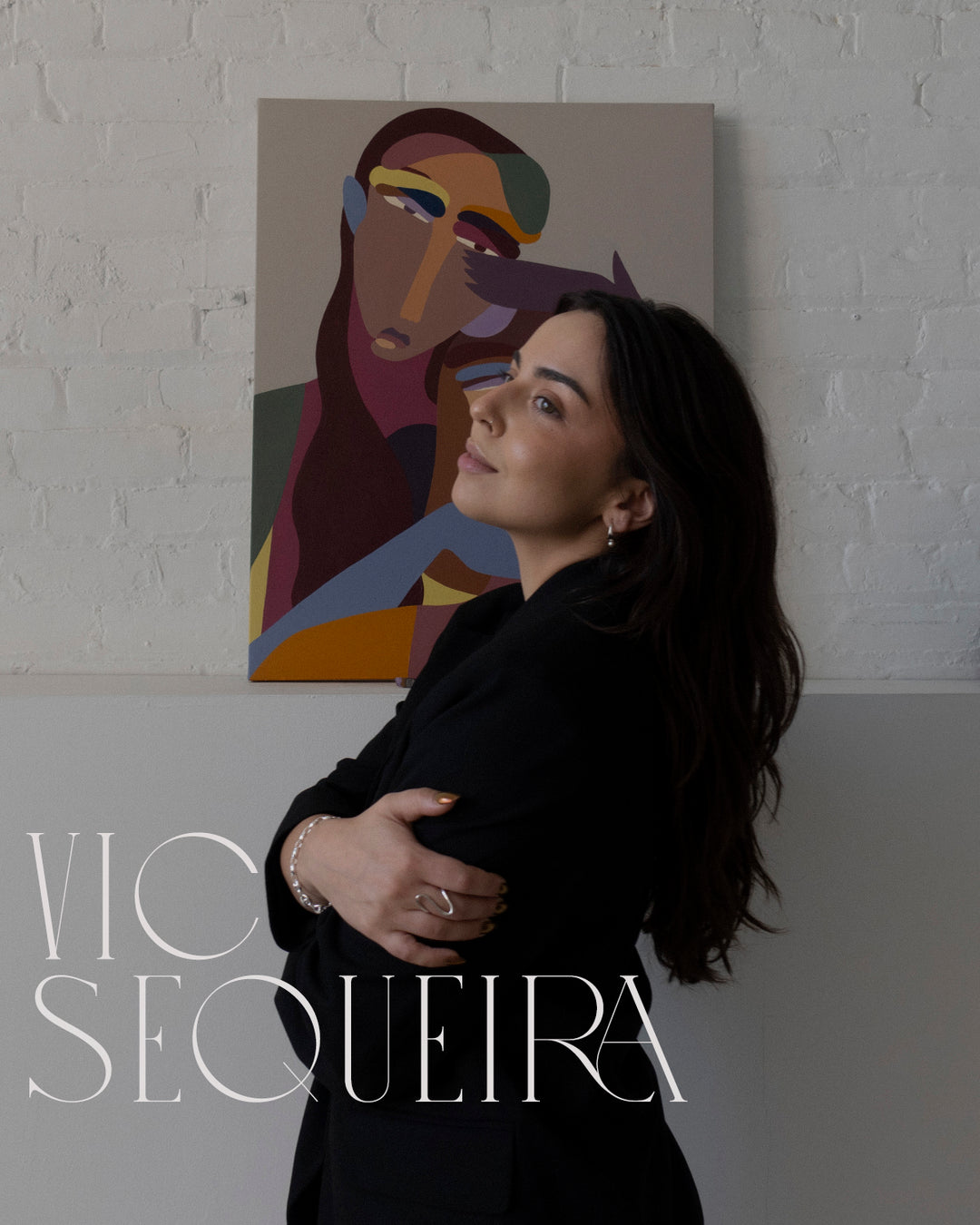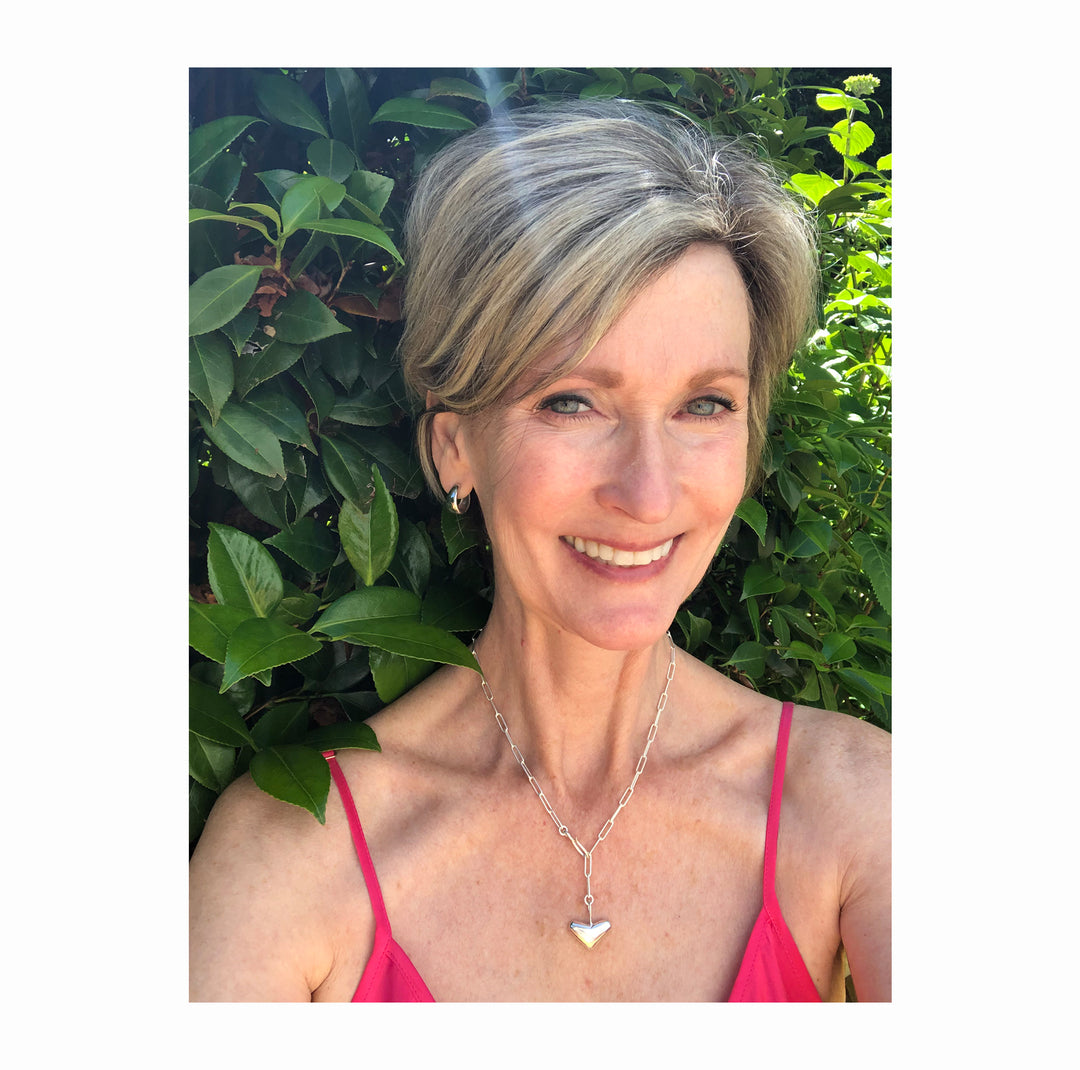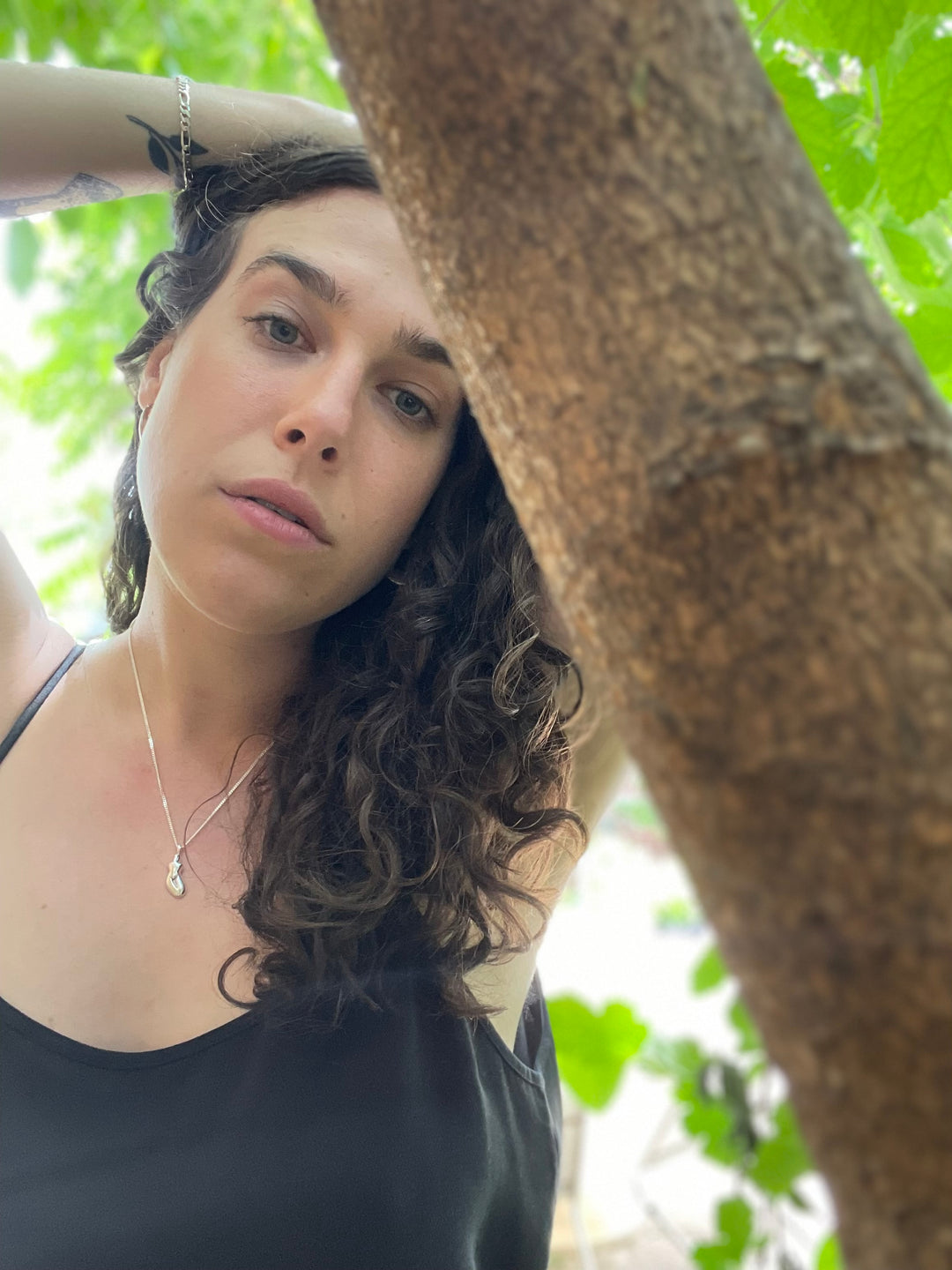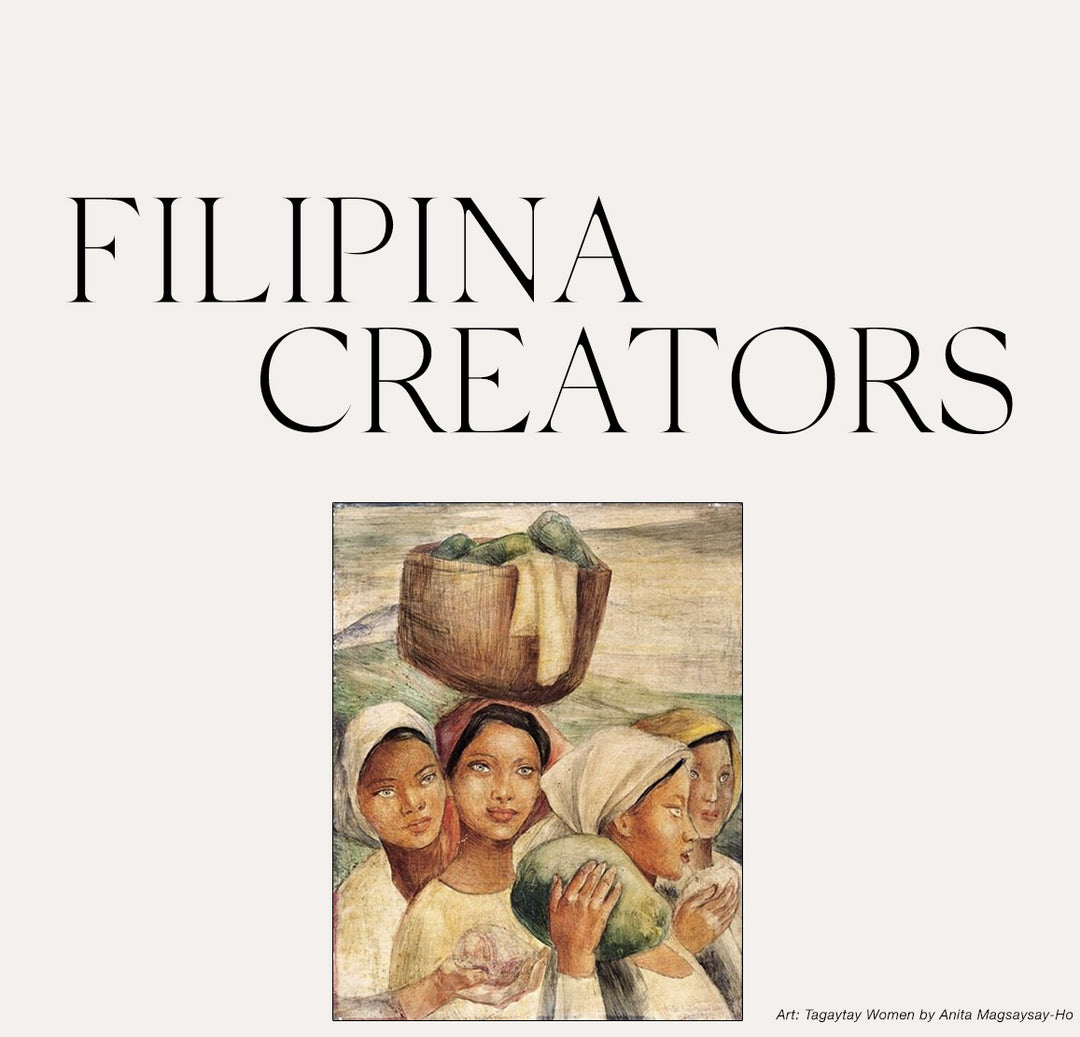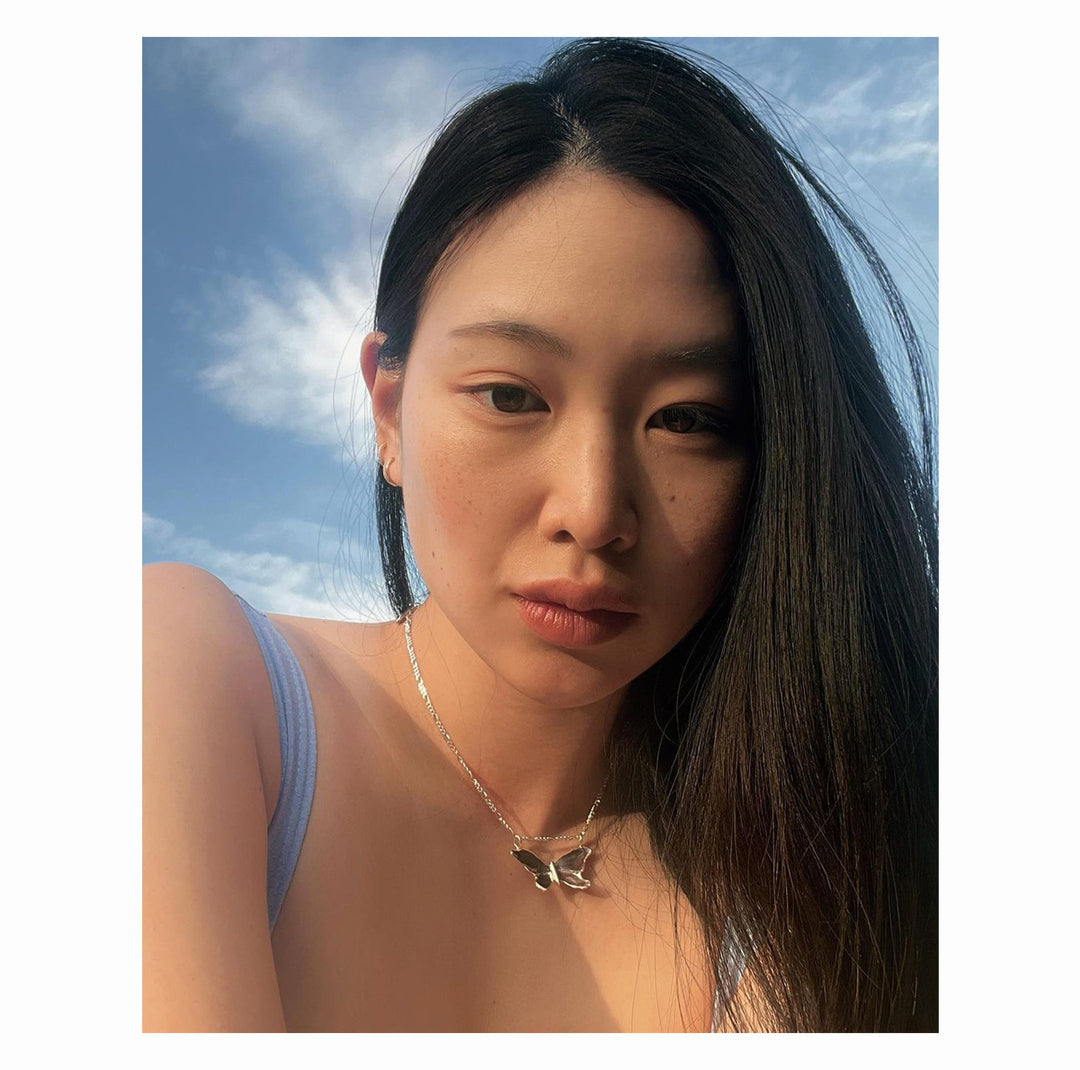AN ARTIST'S JOURNEY | Laura Naples
I was fortunate enough to come across Laura Naples's stunning work several years ago when discovering NG Collective – the dual-city painting collaborative of sisters, Laura Naples and Kristen Giorgi. I re-call being equally drawn to both their spectacular work, as well as the synergy of sisters creating art, distinctive from each other, yet complimentary in palette and rhythm. And I've been closely following their work, ever since.
I recently approached Laura with the idea of doing an interview on her, as the tidbits she shares on Instagram – from her creative process, to opening a new gallery and work studio, to her sources of inspiration, have always fascinated me. I've been eager to learn more about her path as an artist and am so grateful for all that she shares in this interview that will leave you feeling inspired to embrace change, adventure, and your intuition.

My name is: Laura Naples
I grew up in: the Midwest (Michigan, Illinois, Ohio) states
I currently reside in: Hudson, Ohio (USA)
I make a living by: painting
I'm passionate about: making meaningful connections
My astrological sign is: Pisces
—

Lalls, 2018.
When I look at your paintings, I immediately feel at peace and ease. From your dream-like palettes, to the sinuous flows of your strokes, each piece presents an array of elements in such a stunningly harmonious way. How do you describe your artistic style to new viewers?
What a lovely description - thank you! I appreciate hearing how you experience my work and your use of the word “harmonious” to describe it. I gather elements that strike a certain personal chord. My compositions are less narrative than reflective of the peace I attempt to cultivate in my own life. They reveal an ongoing practice of living gratefully with imbalance, of discovering beauty and joy in the process of trying.

Can you briefly describe your creative process when beginning a new painting? Is there a recurring structure, or does it differ from one piece to the next?
Long before I’m in front of the blank canvas, I’m noticing, reading, meditating, conversing, and documenting intersections of thoughts and themes. I keep records in a sketchbook and on my phone - until concepts begin to emerge from the disorganization. When I’m ready to begin application, I engage the senses. I’ll surround myself with a handmade or natural object or two - along with books open to specific pages - as visual reminders of the references that brought me to that beginning. I might light a candle or burn palo santo. Then I make coffee or tea and load up a playlist that feels right for the mood. Lately I’ve been listening to Texas Sun by Khruangbin and Leon Bridges, KIWANUKA by Michael Kiwanuka, Deep Theta: High Coherence Sounds by Steven Halpern, and A Different Kind of Fix by Bombay Bicycle Club.
Possessing a distinct [artistic] voice and style is something many artists strive to find. How would you say you arrived at yours? Did it happen right away, or was it a long process?
It was gradual, and will continue to develop according to where I direct my attention and how I grow. However, some recurring themes have been with me since I was a child, when I first was moved by art in its various forms.

Livvia VI, 2019.
What are the key sources of inspiration for you and your work?
I was a ballet dancer until I was a teen. Elements of ballet still influence me. If you look at my work and think about the classical palette of blush pink and black, the expression of line and textural variation of rhythm, and the various textures – satin pointe shoes, rosin box, wooden barre – you can loosely find it. Beyond just the visual representation, the physical marks I make can be either controlled and free, or sometimes both simultaneously, like the movements of a dancer.
Other constant sources of inspiration include inverses and contrasts, for example: water and the desert; a shell’s matte outer and shiny inner textures; rough and polished gemstones; glowing celestial lights against a night sky; softly curved architectural forms that belie hardened building materials; glassware that moves from liquid to solid as it cools.

When you experience a creative block, where or what do you turn to, to revive that spirit?
If possible, I try to unplug and take a walk, read, meditate, write. Sleep is a great eraser of creative blocks, so if I can wait until the next day to revisit the work with fresh eyes, that’s helpful. To avoid overworking a painting I usually move among several projects simultaneously so that I can reset from piece to piece, rather than focus too narrowly.

I recently discovered that you’re a graphic designer turned painter – what was the core motivation behind your pivot?
I was more attracted to the principles of graphic design and art foundations than the technical aspects of design applications and technologies, which are always evolving. My design roles led me from advertising to healthcare, and eventually stationery. The tactile aspects of design appealed to me: creating moodboards, sourcing papers, hand-lettering envelopes in calligraphy script. My favorite project was my sister’s wedding stationery, which was published in Martha Stewart Weddings.
When I had my daughter, Catherine (now 12), I stayed home to take care of her while I freelanced. I made stationery during my daughter’s naps (and in the middle of the night): manipulating type, sourcing materials and packaging, editing product images. I built an Etsy shop for the brand, which was centered around the experience of sending and receiving a handmade note.
In 2013 I began to collect abstract art, and was tempted to paint as an alternative creative outlet. In conversation with my sister, Kristen Giorgi, who had a background in art and fashion, the idea was articulated to each paint and share our work with one another. As our dialogue eventually extended beyond the two of us, our individual styles – rooted in our design backgrounds – took shape, and remain complimentary in ways that reflect our relationship as sisters.

Larra, 2019.


Kallisto II, 2019. (By Kristen Giorgi)
Did you have any fears or doubts when taking the leap? If so, what ultimately gave you the confidence to just go for it?
I actually had an interim period between graphic design and full-time painting: I worked in the administrative offices of The Cleveland Museum of Art, while continuing to paint part-time. My role at the museum afforded on-the-job inspiration, but eventually I found myself unable to take on many new painting projects as a result of my limited time outside of office hours. That realization launched a discernment; for many months, I investigated whether painting full-time might be more fulfilling and serve my family’s needs in a more flexible way. I researched (podcasts such as Second Life and How I Built This were helpful), talked with my sister (who had already begun to paint full-time), and checked in with myself until I knew it was the right time. Once I had made the decision, I received what felt like divine confirmation while listening to a podcast interview of Valerie Jarrett, former senior advisor to President Obama, during which she asserted: “If you do have a choice, then take the step towards adventure”. I trusted that I could learn to allow fear to sit with me while taking the exhilarating path.

Are there aspects of your graphic design background that you apply to painting?
There are correlations between my attention to alignment and composition, as well as form - letterform or brushstroke. My paintings on black paper and canvas indirectly arose from my fascination with light knockout type on a dark background, the inverse of print’s origins of dark ink on light paper. I first explored making that concept tactile through calligraphy, using white ink applied onto black paper. When I later brushed diluted white paint to black coated paper, I was captivated by the resulting tonal gradients.

Lyte IV, 2020.
What has your support system been like throughout your journey? The path of an artist or creative professional can be a challenging one, did you always have the right people around you that supported your vision?
My family and friends are the supportive structure that make it possible for me to work and grow. I’m surrounded by people who understand the value of engaging with the arts and creative practices.
My parents and grandparents took me to plays, museums, and libraries, and enrolled me in community art classes. At 10 years old, I was given an assignment to create a future photo album that turned out to be prophetic. My mom and I photographed me in settings all around town to depict what my life would look like in 10, 20, and 30 years. I imagined myself in a studio as a working artist, in a gallery as a curator, and in a home office as a writer – and developed the photos to envision all of it, which on some level made me believe I could do it. In Untamed, Glennon Doyle suggests that we can conjure up our “original plan” by writing down the truest, most beautiful lives we can imagine; the truest, most beautiful families we can fathom; the truest, most beautiful world we can hope for – and that our imaginings will become the blueprints for our lives, our families, and the world. Creating my “future photo album” with my mom in 1988 developed an initial rendering and allowed me to see that she believed I could do those things. What a gift.

Laura's new gallery & work studio.
What is the most gratifying aspect of the work you do – the underlying why that drives you, daily?
The work I do reflects something about my inner being, and I value having a tangible record of that evolution. But the process itself is ultimately more gratifying, because it’s a practice of making choices - thinking critically with emotional awareness - that I get to develop whenever I work. It can be thrilling and exhausting. I’m grateful to have a channel of expression and for the meaningful connections that have come into my life by way of sharing it.

In the VIDA Necklace
What is one of the most challenging aspects of being a visual artist, today? Or the art industry?
Social media presents new challenges as well as opportunities to artists. We have to intentionally create some boundaries around our own thoughts and interpretations from the constant intake of information, as we absorb so much that’s shared. At the same time, we can benefit from collaboration, and from the increased physical reach that we can achieve through social media. I tend to fall more on the side of its benefits rather than its deficits.

I’m so inspired by the fact that you are a mother, as well – how has motherhood influenced your work or approach to being an artist?
The rhythms of my role as a mom to Catherine and James do influence my work, as I manipulate and flow with elements both in and out of my control in our family life and in my painting. The process of arrangement dictates direction and is, itself, satisfying.
I also find, as a parent, I’ll relay messages to my kids that I actually need to hear myself to better my approach to work, such as: mistakes are expected and respected; pushing against resistance creates growth (it’s not supposed to be easy); being creative is less about making art and more about making connections; breathe; get outside; drink water.

Lambent, 2020.
What are your thoughts on work / life balance? Is there a distinct separation between the two, for you?
I love Stacey Abrams’ thoughts on this concept: “I believe in work-life Jenga, not work-life balance” - making the best out of each moment, one piece at a time. With that reframing, the pressure’s off. Of course, this is easier said than done. To separate the two, I try to stay present in whichever mode I’m in. Unplugging has been the most effective management tool for me to delineate boundaries.

Do you ever feel the desire to try your hand at a different craft or medium (In addition to graphic design and painting)?
Lately I’ve incorporated more drawing into my process, using colored pencils to make fine lines and geometric directionals. In terms of other practices, I’m fascinated by so many things, but in particular, I’d like to continue to write frequently, and collaborate with interior designers and artisans.
 Lynnah, 2020.
Lynnah, 2020.
Name one thing, upcoming, that you’re excited for, personally or professionally?
Coming up, I’m playing with scale: from very large to extremely small. And when we are able to again gather in person, I hope to host creative experiences from my gallery in a similar spirit as those you have created with Cadette Studio: gatherings of curious souls who come together with openness, to share and be transformed by each other and by a shared purpose.

Let’s finish off on the topic of self-care – what rituals or activities do you consistently make time for that bring you joy, relaxation or peace of mind?
In addition to meditation, I take time to move my body. I run, dance, practice yoga, or take The Class. Listening to music and creating playlists is tremendously good for my soul. Lately I’ve been reading poetry aloud with my kids before bed; they make it funny by reading the poems in their best British accents. I love my morning coffee and evening cocktail rituals. But sometimes peace of mind isn’t about being quiet: a good friend told me she had a rough day in quarantine this week, so she drove herself to an empty parking lot just to scream inside her car for a few minutes. If that’s not the ultimate self-care, I don’t know what is! I look forward to trying it myself one of these days.

Lorrina, 2020, alongside the VIDA Necklace














